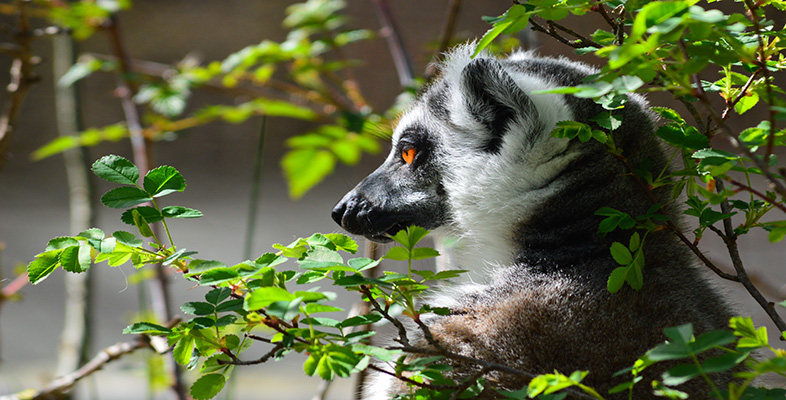6 Reflection
Most of the activities that you have done so far are based on your understanding of single sections that you have just read. Activity 8 which follows, is different. It requires you to assemble and integrate information over the whole 'Life in the trees' topic and is likely to require some extra effort and thought. Integrating information from different sections of the course; is an important element in building your study skills. You're asked here to assemble evidence in support of a particular proposal and find other evidence that might cast some doubt on that same proposal. Critical evaluation of a statement, often from a number of perspectives, is an important writing skill in science and requires you to use facts to support your argument.
The final activity in this study period sets you a more demanding writing task that will require you to look back on this study period in its entirety, find some evidence and think of its significance.
Activity 8
A number of theories seek to explain how primates originated and what factors have shaped their early evolution. The oldest of them (the arboreal theory) states that primate characteristics evolved in the way they did as a consequence solely of selection pressure from living in trees.
(a) Write an account, of up to 200 words, that summarises the evidence in support of this proposal. You'll need to look at the list of primate characteristics in Section 3, identify those that are most closely linked with living in trees, gather together information about each from other parts of the text, and then structure your answer in a coherent way.
Answer
The hands and feet of primates are generally suited to the grasping that would be essential to living in trees. The thumb and/or big toe are angled outward (i.e. divergent) and in many species this digit is manoeuvrable, sometimes to the point of being opposable. The hands and feet, therefore, have a wide span and can grip, i.e. are prehensile. There are fleshy pads at the tips of the digits, and the possession of nails (rather than the claws likely to have been present in primate ancestors) may well be further adaptations that ensure effective movement through trees.
Effective vision in early tree-dwelling is likely to have been important. Primates have eyes that are forward-pointing and their fields of view overlap, providing stereoscopic vision, which is important in judging distances when moving through trees and for seizing prey (and perhaps fruit). The sense of smell is generally less important, though this sense can sometimes be significant, for example for nocturnal species and for species that inhabit dense vegetation. The characteristic structure of the muzzle of primates may reflect a downgrading of the sense of smell.
Activity 9
(b) The arboreal hypothesis is currently being re-evaluated as other facts that might have shaped early primate evolution are being considered. One approach has been to look at arboreal animals that are not primates and see if they have adaptations identical to or different from those of primates. Another has been to look for features of primates that are less readily explained as a consequence of living in trees - such as their omnivorous diet and the reduction in the sense of smell. Write about 200 words summarising evidence of this type that is useful for evaluating the arboreal hypothesis.
Answer
The tree-dwelling habit is well established in non-primates. The kinkajou is primate-like in some of its features, especially its monkey-like tail. Other features contrast with those of primates, notably claws. Indeed, in many species, claws can be very effective aids to climbing (e.g. sun-bear and tamandua). Many squirrels are also well adapted to tree-living and the lack of an opposable thumb and prehensile feet does not seem a strong evolutionary disadvantage, neither does the apparent lack of stereoscopic vision. A wide variety of adaptations are apparent in arboreal species, many of which are different from those evident in primates.
The leaf-, flower- and fruit-eating habits are widespread in primates, but the group as a whole is regarded as omnivorous. A number of primates have features of their digestion that are akin to true herbivores, e.g. bush-babies and some lemurs. But if access to leaves was such a strong feature in shaping primate evolution, it is perhaps surprising that a capacity to digest cellulose is not more widespread. It is less easy to see the diminished importance of smell in primates as linked with tree dwelling. In some tree-dwelling non-primates (e.g. the kinkajou), smell is significant; many primates (e.g. lemurs) seem to rely extensively on smell - of value in an environment where vision may be restricted.
If you found this activity difficult, don't be concerned - these are tricky arguments, even for professional biologists! My advice would be to read your answer and compare it with mine and think critically about the strengths and weaknesses of what you've written. Look back at the text of the course and make sure that you're able to find the relevant information, so that next time 'evidence gathering' of this type will be more manageable.
As the answer to part (b) of Activity 8 implies, evidence of this type is now prompting a reappraisal of the arboreal hypothesis. Maybe the development of primate-style vision and grasping hands and feet and the reduction of curved claws are adaptations linked with feeding on the fruits and insects on the low-growing shrubs, rather than high up in trees. The view at present is that while the tree-dwelling habit had an enormous influence on early primate evolution, other pressures and forces were at work in promoting the evolution of this group and shaping it into the diverse assemblage we see today.
